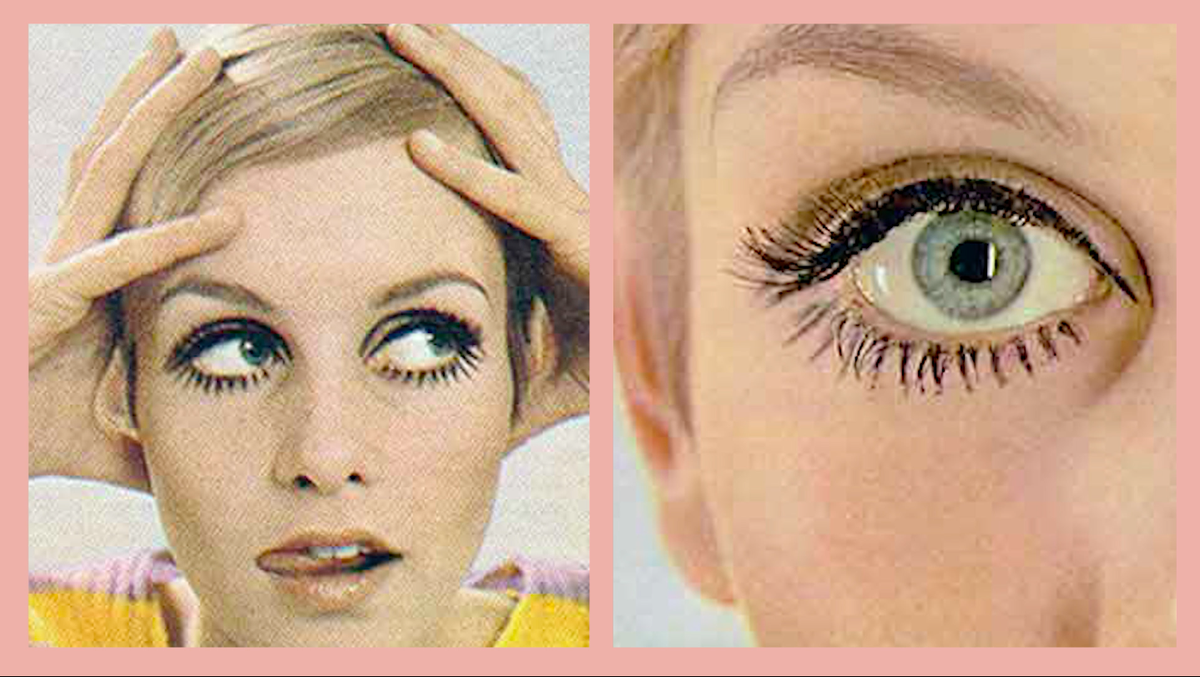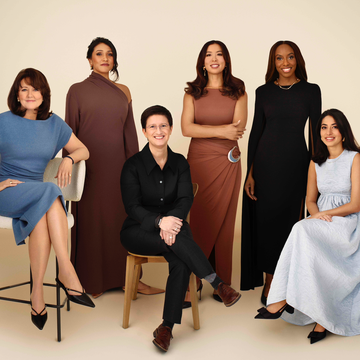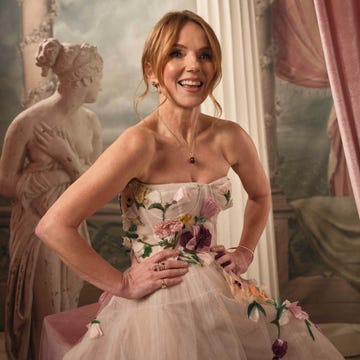"I was so young when it happened to me," says Twiggy. "I hadn’t even thought about a career. I was still at school. My vague ambition was to become a fashion designer, as I loved making my own clothes. But then the world had other ideas…"
Indeed it did. In 1966, Lesley Hornby – a 16-year-old from north-west London, who had a Saturday job as a shampoo girl for the hairdresser Leonard Lewis – found herself unexpectedly catapulted into the spotlight after Lewis hung a photograph of her, complete with newly styled blonde crop, on the wall of his Mayfair salon. Her striking image was spotted by a client, the fashion editor of The Daily Express, who promptly booked Hornby for a shoot and published it under the headline ‘Twiggy: the Face of ’66’.
The result was ‘Twiggymania’. The schoolgirl was suddenly the most in-demand model of the day, courted by Diana Vreeland, and posing for Richard Avedon and Cecil Beaton. Her edgy, elfin look, synonymous with the mood of Swinging London, captured the attention of audiences around the world. In one famous shot by the photographer Melvin Sokolsky, she is pictured standing on the streets of Manhattan, surrounded by a crowd of people wearing Twiggy masks.
"Looking back at it all, it’s almost like watching somebody else," she says, letting out what I soon realise is her trademark cackle. We are talking just as a documentary of her life, Twiggy, directed by Sadie Frost, is to be released. It started as a joke between her and Frost, when the latter appeared as a guest on her podcast Tea with Twiggy. "I’m always asked, 'What was it like to be a teenager then?' But I think when you lived through a time, you never stop to think, 'Isn’t this is amazing? Aren’t we lucky to be young?'"
The Sixties, for Twiggy, were a whirlwind. "I’d never even been abroad before, and then I was going to Paris, New York, Tokyo," she remembers. "It was weird, but it was exciting. I was wearing these gorgeous clothes. I was getting paid! When we went to LA, Sonny and Cher threw a party for me. Can you imagine?"
She is still friends with many people from that time, notably Paul McCartney, who, she says, shares her own surreal relationship with the decade. "I went through just a tiny bit of what the Beatles did. But Paul is so unchanged by it. It’s amazing he’s as normal as he is." McCartney performed a special version of his song ‘Blackbird’ for the documentary. "He’s such a special friend. Back when he first met Linda [Eastman, who became his first wife, and who died in 1998], he told me to make her feel welcome and take her shopping," she recalls. "Me? Shopping? What an idea!"
Twiggy’s gamine look would come to redefine the beauty standard of the era. "I have women from my generation who were a similar build to me who still come up and say that I changed their view of themselves," she says. "But then I have women who weren’t my build at all who tell me I ruined their lives!"
She says this lightly now but, like all women in the public eye, Twiggy suffered her share of body-shaming. When she was still a teenager, interviewers would regularly accuse her of encouraging girls not to eat – sometimes practically in the same breath as asking her to reveal her waist measurement. "I never went out at the time and said, 'You’ve got to be thin'. I happened to be born that way," she says. "I was a skinny kid, but I loved to eat and I always made a point of saying that. I hated what they used to say about me."
Perhaps the most infamous example of her mistreatment by the media, however, was at the hands of Woody Allen, then a relative unknown, who attempted to skewer Twiggy in a 1967 interview in New York. Playing into the trope that models were unintelligent, he insisted on asking her who her favourite philosophers were. "Watching it now, I still get that awful feeling in my stomach that I got at the time. I was very shy and didn’t know what to say," she remembers. "All I kept thinking was, 'I mustn’t cry.'" But her coup was still to come. "Who’s yours, then?" she asked. Allen was unable to answer.
It is tempting to assume that experiences of this kind contributed to her decision to quit modelling for acting in the early 1970s. But, though she concedes that "models were looked down upon as just pretty ornaments", Twiggy insists she had no real strategy for her career beyond a willingness to try new things. A dinner with the director Ken Russell precipitated her pivot into film and music, after he offered her the lead in his 1971 musical The Boy Friend and battled the studios to cast her. The gamble paid off: she won two Golden Globes for her portrayal of Polly. She describes the filming process as illuminating. "I thought, 'Oh, my God. So this is what you can do. This is fabulous.'"
Finally in control of her own professional life, she went on to record several albums, embarked on a tour that culminated in a sold-out concert at the Royal Albert Hall, and hosted her own variety show in the mid-1970s. She maintained a screen career throughout, including – her personal highlight – a television adaptation of George Bernard Shaw’s Pygmalion in 1981. "I think I was the first actress to do Eliza the right way round," she says. "I really had to work at the posh bit!"
In the early 1980s, Twiggy was approached by the acclaimed actor Tommy Tune to appear alongside him in the George and Ira Gershwin musical My One and Only. "When do we start filming?" she asked, only to discover he wanted to cast her in her first stage role. She now cites the Broadway production, which ran from 1983 to 1985, as her greatest achievement.
"I’m proudest of that because I really thought I couldn’t do it, and I did. In fact, I worked so hard, I had tonsillitis by opening night," she says. "But I’ll never forget that thrill on stage. There’s nothing like it." She recalls a jaw-dropping list of stars who came to see the show and visited her in her dressing-room, including Lauren Bacall, Gene Kelly and her idol Ginger Rogers. I ask if they gave her any notes. "Oh, nothing so mean as that!" she says, laughing.
In 1993, Twiggy made a surprise return to modelling ("It’s like riding a bike!") – an experience she says has been "much more empowering" as an older woman. Her campaigns for Marks & Spencer in the early 2000s were credited in the media with saving the ailing retailer and, in a move reminiscent of her first ambition to be a fashion designer, she worked on a collection for the brand.
It led to her creating her own line of womenswear and accessories, Twiggy London, with the Home Shopping Network in America, which ran from 2010 to 2020. "I absolutely loved that part of my job, and would always be up for doing something like that again," she says. "One of my favourite things is getting my sewing-machine out, putting my music on and making something."
Now aged 75, she has no intention of retiring. She lives with her beloved second husband, the actor and director Leigh Lawson, dividing her time between London and Suffolk, and has a daughter, Carly, by her late first husband Michael Witney.
When she isn’t recording new music, she’s busy promoting her documentary with Frost, and there is also the prospect of getting Ben Elton’s musical about her life transferred to the West End following a limited run at the Menier Chocolate Factory theatre in Southwark in 2023. "The first time I went to see it, I cried the whole way through," she says. ‘It made me think, 'I’ve really done quite a lot with my life, haven’t I?'’
‘Twiggy’ is in cinemas now. This piece originally featured in the April issue of Harper's Bazaar UK.

















